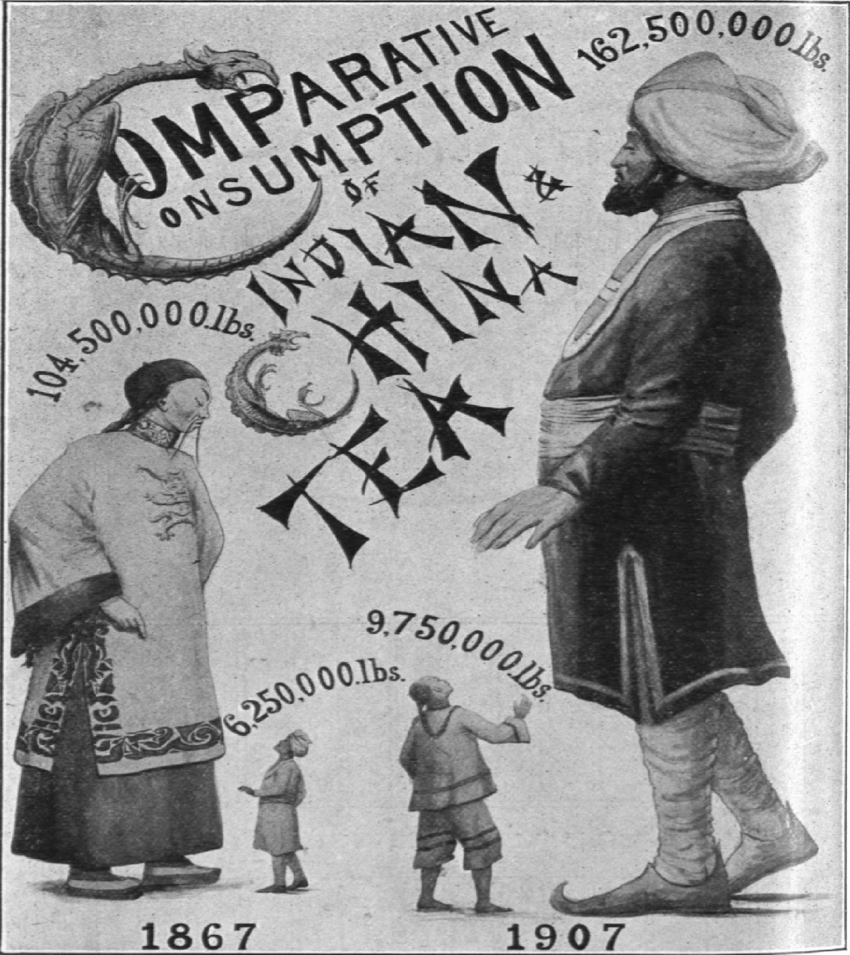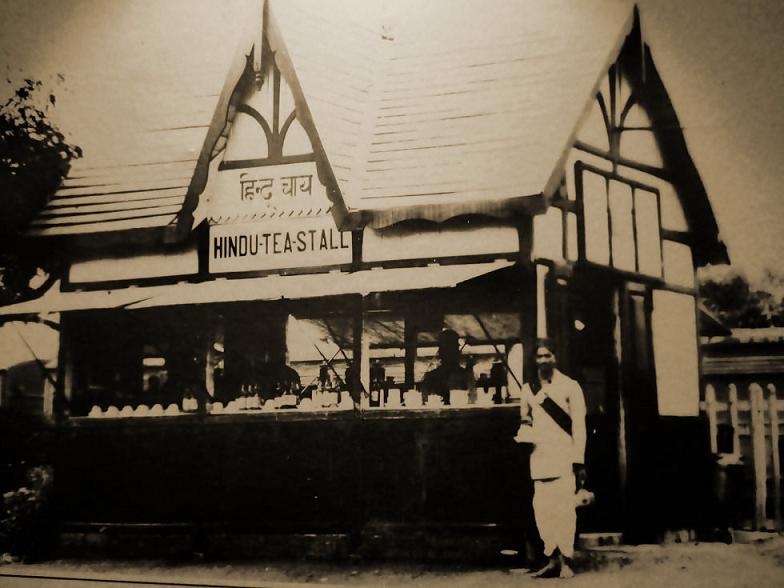The chai story in India is separated by a few centuries and unfolds in more ways than one.
Legends trace back the origin of masala chai 5000 years ago in the royal court of Harshavardhana who concocted this special beverage. Made with the goodness of Ayurvedic herbs to stay awake during long court hours, the delicious masala chai soon trickled down for mass consumption. More often than not it served as a remedy for mild ailments.
The original version of ‘masala chai’ however contained no actual tea leaves and even milk and sugar varieties occurred thousands of years later. However, this concoction remained on the memory palette of the masses and would emerge much later and become a national staple.
It was the Britishers who would bring organized tea plantations to India in the early 1800s. Tea trade with China permanently terminated, the British were on the lookout for a new market. With the discovery of the possibility of growing tea in India, they seized upon the opportunity to capture the global tea market. Soon by the late 19th century, Indian tea far exceeded the popularity of Chinese tea aided with the exploitative measures and aggressive advertisement of the Britishers. Chinese tea was bandied as weak and less pure in comparison to Indian teas. Also, they sought to point out Darjeeling and Assam tea were more full-bodied and flavors at a cheaper price.
The massive production of Indian teas saw differential auction house prices at London, where the preference was on the higher grades of the leaf with no real market for the fannings and dust. Coupled with the long-distance transportation, by the late 1900s, the British-owned Indian Tea Association began to realize India as a potential market for the leftover tea. In the beginning, the reception of the beverage was lukewarm. WIth periodic advertising of tea as a symbol of elite social class, it began to draw a certain audience, especially amongst the Parsis and Bengalis.
A special mention should be made of the Indian Railways which played a symbiotic role not only in the globalization of tea but also in creating the culture of chai. It became the first chai epicentre. Low-quality tea would be sold in paper packets at very low prices to the public especially at the Howrah railway station in erstwhile Calcutta. Tea stalls at Howrah railway station(some exist even to this date) were set up for the sole purpose to demonstrate the British way to steep tea. It was the Great Depression that followed after World War I, when international tea prices dropped, that witnessed the rise of Indian and Eurasian vendors, with their special tea-making units selling chai at the railway stations of Bengal, Punjab, and Frontier provinces.
The Tea Association put in all their effort to develop the domestic market. Hoardings and posters in vernacular displaying tea recipes were put across several railway platforms, covering even the suburban railway network. With the cost of black tea still high even for domestic consumption, the dormant memory palette of Indians began to awaken. Local vendors to make each cup more cost-effective and close to popular traditional beverages like ‘sharbat’, began to add large quantities of milk, sugar, and an amalgamation of spices. The hybrid beverage soon converted the nation from being a mere factory to a booming market.
The difference in tea drinking styles however still persists mainly due to the difference in variety. The exquisite Darjeeling tea, prized for its aroma and champagne color, was never made available to the Indian mass. Conditioned from the beginning to drink low-grade teas, the dust and the fannings or the CTC, most Indians would find Darjeeling tea with its thin-body, ill-suited for making a cup of chai. With more demand in auction houses abroad, the high price of Darjeeling tea remained further alienated from the palette of Indians.
But the chai has triumphed in so many ways. Despite historical ups and downs the ‘chaiwallah, the ‘chai stall to this day is a cultural icon. The humble beverage itself has gone around the world and re-invented itself in various monikers of chai latte, golden chai, pumpkin spiced chai tea latte, masala chai ice cream, and lovingly savored. Steeped in history and legend, the chai remains still, a constant cup of comfort.





